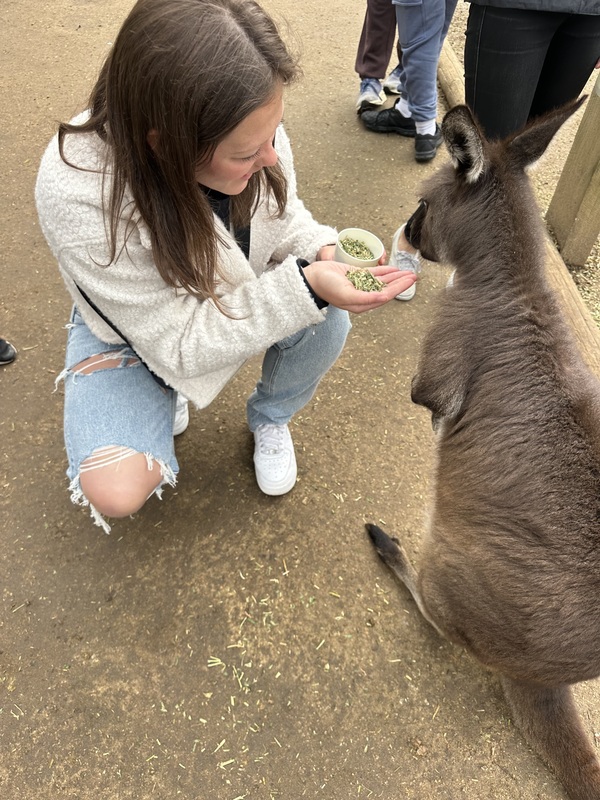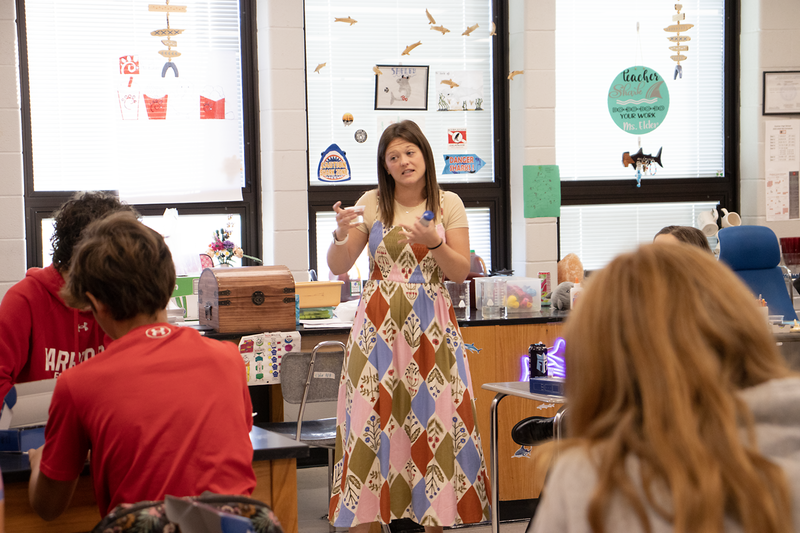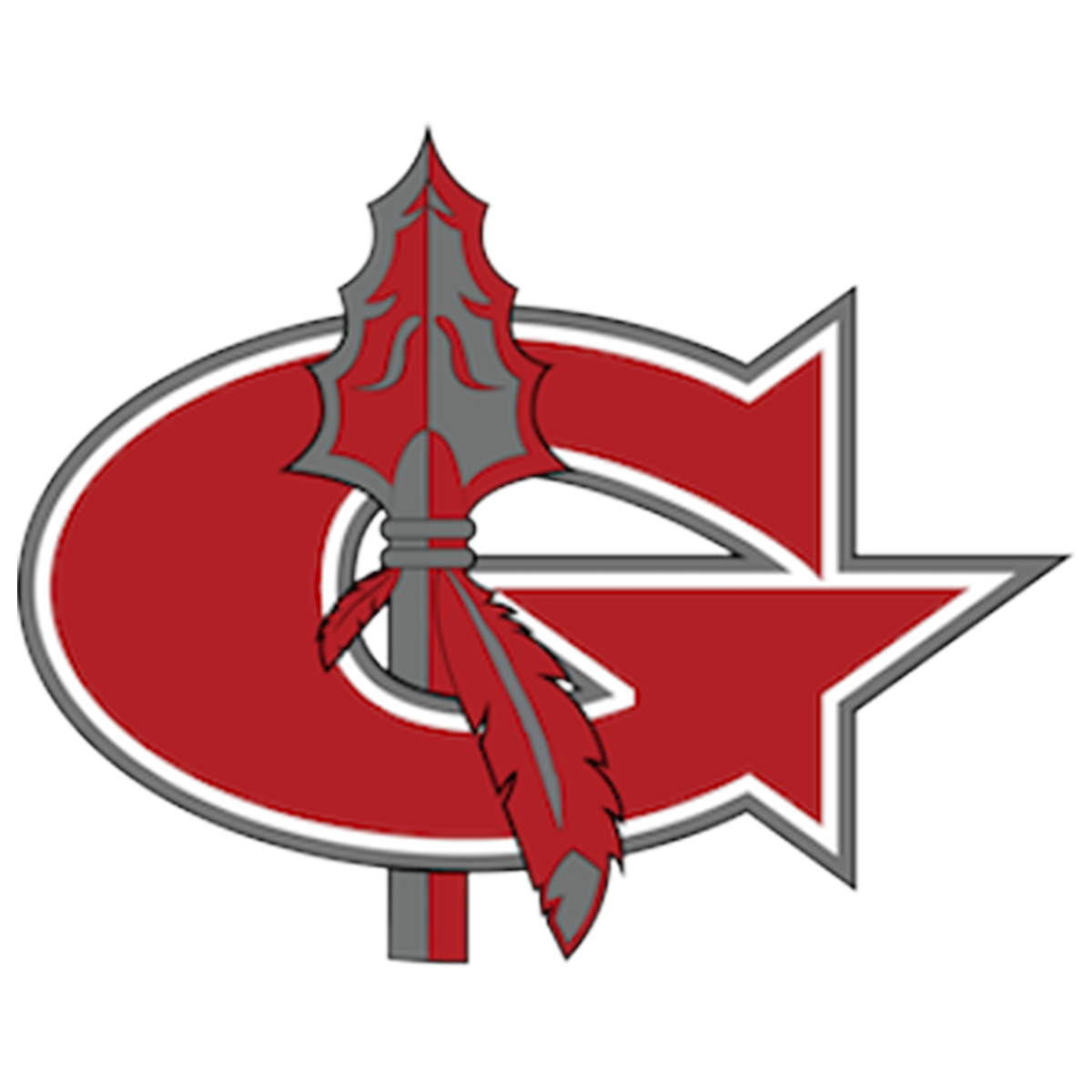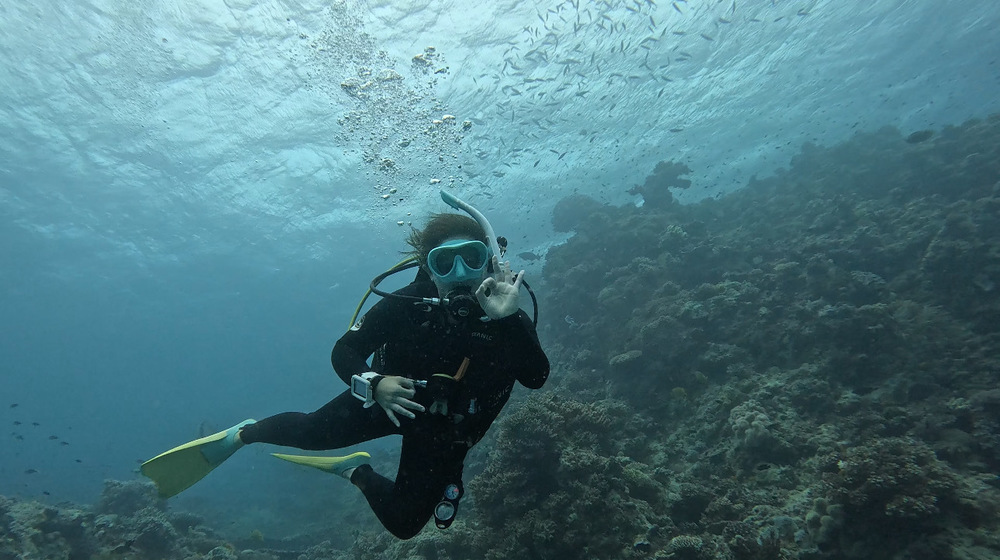Can young people in Goshen, Ohio, play an important role in protecting the Great Barrier Reef on the opposite side of the globe? If you ask Goshen High School science teacher Shelby Elder, the answer is a resounding yes!
Elder spent part of this past summer diving the Great Barrier Reef off the coast of Australia, learning about the ecosystem and then bringing back that knowledge to her Goshen High School students. This was just one of three in-depth field research trips Elder has made to study biodiversity and conservation, all part of her work to earn her master’s degree from Miami University.
In her fifth year of teaching at Goshen, Elder recently shared what she has learned both in and out of the classroom.
Q. How did you become connected with this opportunity?
A. I became connected through Project Dragonfly at Miami University, where I’m pursuing my master’s degree. This year, my course took me to Australia to study coral reef conservation, but I’ve also had opportunities to study in Baja California, Mexico and the Galápagos Islands through the program. Each experience has shaped the way I teach science here at Goshen.
Q. What is the main focus of your master’s work? Was this particular program similar to others you have done?
A. The central focus of my master’s work is on prompting local biodiversity and showing my students that they can make real, meaningful scientific contributions—no matter their age or where they live. I want them to understand that their data, observations, and efforts matter in the larger scientific community.
In Baja California, I studied field methods, desert ecology, marine ecology, and topics like whale sharks, ecotourism, microplastics, and youth involvement in conservation. I directly incorporate what I learned there into Mrs. Smith’s AP Biology class where I guest lecture when they study conservation, sustainability, and especially microplastics. I also use the field methods I learned in this course in the semester-long inquiry projects I do with my freshmen students each year.
Australia was unique compared to those experiences because it focused heavily on coral reef ecosystems, climate change impacts, and marine biodiversity. I signed Goshen Local Schools up to be a Reef Guardian School through the Reef Authority and will be completing tasks throughout the year to promote a healthy reef, even though we are over 10,000 miles away. Our actions here can make a direct impact on the Great Barrier Reef!
Q. Share one or two highlights of this program.
A. One of the most significant highlights was the opportunity to scuba dive on the Great Barrier Reef. Experiencing the reef firsthand allowed me to truly appreciate its biodiversity and complexity. I was able to observe sea turtles, giant clams, and countless fish species moving through the coral structures. The vivid colors and variety of life were remarkable, yet I also witnessed the sobering reality of bleaching and stressed coral. The combination of beauty and fragility left a lasting impression on me and reinforced the urgency of teaching my students about the importance of conservation and climate action.
Another highlight was experiencing Australia’s incredible terrestrial wildlife. I was able to see kangaroos, koalas, wombats, wallabies, and a wide variety of bird species in their natural habitats. I also encountered species unique to Australia such as giant spiders, venomous snakes, and saltwater crocodiles. Observing this range of wildlife emphasized the uniqueness of Australia’s ecosystems and the importance of biodiversity. These encounters provided me with a broader perspective that I can share with my students to illustrate how ecosystems differ across the globe and why protecting biodiversity—whether in Australia or here in Ohio—is so vital.
Q. How will you use what you have learned here at Goshen?
A. My goal is always to make science meaningful for my students by showing them real-world connections. From Baja, my students learned about microplastics and their global impact. From the Galápagos, they gained a deeper connection to Darwin’s theories and the roots of evolutionary science. From Australia, I’ll be bringing lessons on coral reefs, climate change, and biodiversity back into both my biology and physical science classrooms.
I also use my experiences to inspire students outside of the science curriculum. In our Warrior Up Wednesday sessions, I share my master’s program with students as an example of different routes they can take after high school—showing them that higher education and unique opportunities can open unexpected doors.
In addition, I have shared my research more broadly within our district. For example, after my Baja trip, I presented my research at the Board Office and invited two of my students to present their collected data alongside me. That experience led to a collaboration with the Clermont County Parks Department, where my students and I organized an invasive species removal day for Earth Day. I also have an article about this project and partnership being published this September in a peer-reviewed journal.
I want my students to see that science isn’t just happening in a lab far away—it’s happening globally and locally, and they can be part of it. By sharing my experiences, I can help them understand how local issues in Goshen, like invasive species or ecosystem health, connect to larger conservation challenges like those facing the reef. My hope is that this inspires them not only to learn science but to see themselves as contributors to it.



